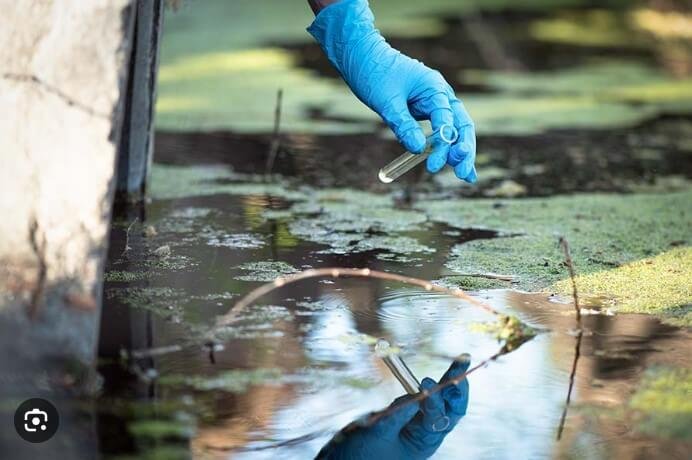Lake Water Treatments: Effective Solutions for Clearer, Healthier Lakes

Lakes are essential ecosystems that sustain wildlife, provide opportunities for recreation, and contribute to the natural landscape’s beauty. However, without proper care, lakes can quickly fall victim to algae blooms, excessive weed growth, and unbalanced water chemistry. This is where Lake Water Treatments become essential. In this comprehensive guide, we explore the best lake water treatment methods, why they’re necessary, and how to implement them effectively.
Why Are Lake Water Treatments Important?
Lakes often accumulate nutrient-rich runoff, such as phosphorus and nitrogen from agriculture, septic systems, and stormwater. These nutrients fuel algae growth, leading to harmful algae blooms (HABs), murky water, and oxygen depletion. Without intervention, this can harm aquatic life, make the water unsuitable for recreation, and produce foul odors.
Lake water treatments combat these issues by reducing nutrient loads, controlling weeds, and restoring natural water chemistry, ensuring the lake remains healthy and visually appealing.
Common Lake Water Problems and Their Treatments
1. Algae Blooms
Algal blooms, especially those caused by cyanobacteria (blue-green algae), have the potential to produce toxins that are dangerous to humans, pets, and wildlife.
They thrive in warm, nutrient-rich water.
Treatment Solutions:
- Algaecides: Copper-based or hydrogen peroxide-based algaecides provide fast, effective control of algae.
- Phosphate Binders: Products like aluminum sulfate (alum) and lanthanum-based treatments lock up free phosphorus, denying algae its food source.
- Aeration Systems: By increasing oxygen levels and circulation, aeration discourages stagnant zones where algae thrive.
2. Excessive Aquatic Weed Growth
Invasive plants like Eurasian watermilfoil and hydrilla can overrun lakes, impeding boating, fishing, and swimming.
Treatment Solutions:
- Herbicides: Targeted aquatic herbicides can selectively eliminate invasive species while preserving native vegetation.
- Mechanical Harvesting: For immediate results, weed cutters and harvesters remove unwanted biomass directly.
3. Murky or Turbid Water
Cloudy water can result from suspended particles, algae, or organic decay.
Treatment Solutions:
- Flocculants and Coagulants: These treatments bind particles together, causing them to sink and clarify the water.
- Bacterial Treatments: Beneficial bacteria digest organic sludge and help clarify the water over time.
4. Unbalanced pH and Oxygen Levels
Imbalanced water chemistry affects fish health, aquatic biodiversity, and overall lake function.
Treatment Solutions:
- Lime Applications: Lime can correct acidic water and improve buffering capacity.
- Aeration and Oxygenation: Floating fountains and bottom diffusers help stabilize oxygen levels, especially in deeper lakes.
Natural and Eco-Friendly Lake Water Treatments
As environmental awareness grows, so does the demand for natural lake treatments. These methods are sustainable and safe for fish, birds, and humans.
1. Beneficial Bacteria and Enzymes
These natural products break down muck and organic waste on the lakebed, improving clarity and reducing odor without chemicals.
2. Floating Wetlands and Native Plant Buffers
Floating islands and shoreline plantings, when strategically positioned, capture excess nutrients and decrease runoff, ensuring long-term support for the ecosystem.
Implementing a Successful Lake Water Treatment Plan
To maintain a healthy lake year-round, follow these key steps:
1. Conduct a Water Quality Assessment
Before applying treatments, it’s essential to test for nutrients, pH, dissolved oxygen, and clarity. This data informs which treatments will be most effective.
2. Choose Targeted Solutions
Avoid one-size-fits-all approaches. Select treatments based on your lake’s size, depth, and the specific problems present.
3. Monitor and Adjust
Regular water testing and visual inspections help you track progress and adjust treatments as needed throughout the seasons.
4. Prevent Future Problems
Install runoff barriers, erosion controls, and native shoreline buffers to reduce nutrient loading and sedimentation from surrounding land.
Conclusion: Invest in Long-Term Lake Health
Effective Lake Water Treatments combine science, technology, and ecological stewardship. Whether you’re maintaining a private estate lake, a golf course pond, or a community water body, investing in proper treatments will improve water quality, support biodiversity, and enhance recreational enjoyment.
A balanced approach—using both mechanical and biological solutions—ensures sustainable, cleaner water for generations to come.




